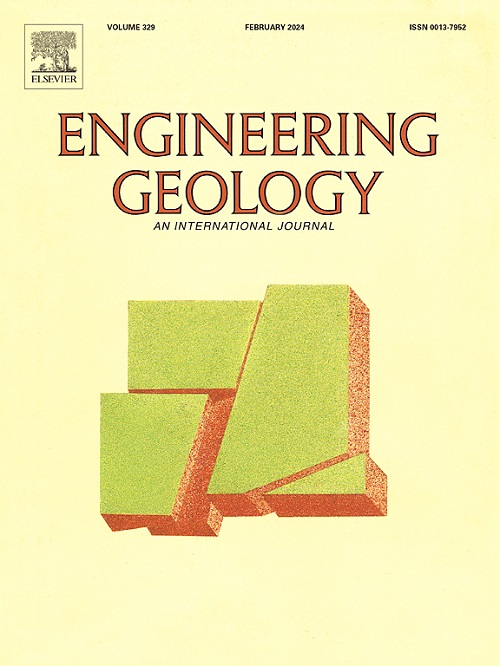Prediction of landslide dam stability and influencing factors analysis
IF 6.9
1区 工程技术
Q1 ENGINEERING, GEOLOGICAL
引用次数: 0
Abstract
Efficient prediction of landslide dam stability is crucial for emergency response and damage reduction. In this study, a comprehensive analysis is conducted on eight landslide dam characteristics. Four machine learning (ML) algorithms, namely Support Vector Machine (SVM), Random Forest (RF), Artificial Neural Networks (ANN) and Logistic Regression (LR), are then applied to predict the stability of landslide dams. This prediction is based on two stability definitions: the dam's ability to endure for over a year and its collapse status at the time of the study. The results derived from the test set distinctly demonstrate that the RF model outperforms the other three ones in terms of its effectiveness. By employing the Synthetic Minority Over-sampling Technique (SMOTE), the issue of the RF model being biased towards predicting unstable dams due to imbalanced samples has been effectively alleviated. This approach resulted in overall accuracies of 76.19 % and 82.35 %, with biases of 0.8 % and 11.6 % and Classification Efficiency Index (CEI) values of 1.024 and 1.046, respectively, under the two stability definitions. Through Principal Component Analysis (PCA), it is further determined that the largest 5 % of particles constitute the primary materials influencing the stability of landslide dams. Additionally, a novel index termed the dam composition index (DCI) has been proposed to characterize the gradation of landslide dams. The proposed prediction method for landslide dam stability demonstrates outstanding performance and contributes to more effective emergency planning.
滑坡坝稳定性预测及影响因素分析
对滑坡坝的稳定性进行有效的预测是应急响应和减灾的关键。本文对8个滑坡坝的特征进行了综合分析。然后应用四种机器学习(ML)算法,即支持向量机(SVM)、随机森林(RF)、人工神经网络(ANN)和逻辑回归(LR)来预测滑坡坝的稳定性。这一预测是基于两个稳定性定义:大坝持续一年以上的能力和研究时的崩溃状态。从测试集得出的结果清楚地表明,射频模型在有效性方面优于其他三种模型。通过采用合成少数派过采样技术(SMOTE),有效地缓解了RF模型由于样本不平衡而偏向于预测大坝不稳定的问题。在两种稳定性定义下,该方法的总体准确率分别为76.19%和82.35%,偏差分别为0.8%和11.6%,分类效率指数(CEI)值分别为1.024和1.046。通过主成分分析(PCA)进一步确定了最大的5%的颗粒构成了影响滑坡体坝稳定性的主要物质。此外,还提出了一个新的指标,即大坝组成指数(DCI)来表征滑坡坝的级配。所提出的滑坡坝稳定性预测方法具有良好的性能,有助于更有效的应急规划。
本文章由计算机程序翻译,如有差异,请以英文原文为准。
求助全文
约1分钟内获得全文
求助全文
来源期刊

Engineering Geology
地学-地球科学综合
CiteScore
13.70
自引率
12.20%
发文量
327
审稿时长
5.6 months
期刊介绍:
Engineering Geology, an international interdisciplinary journal, serves as a bridge between earth sciences and engineering, focusing on geological and geotechnical engineering. It welcomes studies with relevance to engineering, environmental concerns, and safety, catering to engineering geologists with backgrounds in geology or civil/mining engineering. Topics include applied geomorphology, structural geology, geophysics, geochemistry, environmental geology, hydrogeology, land use planning, natural hazards, remote sensing, soil and rock mechanics, and applied geotechnical engineering. The journal provides a platform for research at the intersection of geology and engineering disciplines.
 求助内容:
求助内容: 应助结果提醒方式:
应助结果提醒方式:


